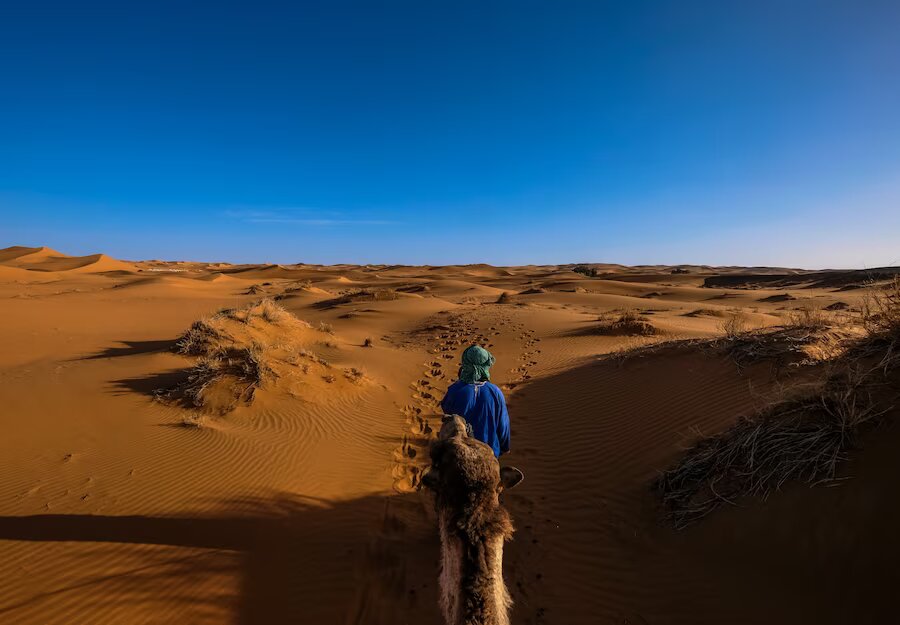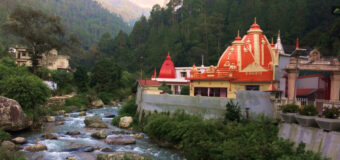October 2024, and the Sahara Desert suddenly gets transformed into a blue lagoon with its sudden rainfalls!
It was the rarest sight in Southeastern Morocco, with sand dunes and palm trees creating the perfect backdrop.
While this is, of course, you cannot see every day in the Sahara Desert. Still, with an area of more than 9 million square kilometers and spreading over 11 countries, the Sahara Desert has been one of the most popular destinations for adventure lovers.
But why Sahara Desert? Because?
- It is the largest hot desert in the world.
- You will find ancient rock formations within its vast expanse of sand dunes.
- You will spot diverse wildlife.
Furthermore, the vastness and dry climate of the Sahara Desert make it an ideal location for stargazing. Notably, Tassili n’Ajjer in Algeria, a UNESCO World Heritage Site renowned for its ancient rock formations, is particularly suitable for stargazing.
The Siwa Oasis in Egypt is another tranquil location for stargazing in the Sahara Desert.
However, with all its adventurous and tranquil appeal, the Sahara Desert is a tough trip to complete.
So, in this Dream and Travel Guide, we will talk about the practical travel tips for the Sahara Desert. So, it’s time to know what you need to take during your visit to the Sahara Desert, when to plan a trip, how to travel, and more!
What Are The Top Travel Tips For The Sahara Desert?
The Sahara Desert is an unforgettable destination, offering a fascinating blend of natural beauty, cultural richness, and adventure.
Embrace the challenges, immerse yourself in the culture, and marvel at the breathtaking vistas that the Sahara has to offer. However, by following the travel tips for the Sahara Desert, you ensure safety and peace of mind throughout your journey.
Also, when planning and booking your trip, don’t forget to have comprehensive travel insurance. It must cover:
- Medical Emergencies
- Evaculation
- Trip Cancellation
- Interruption
- Lost or Stolen Belongings
Having said that, these are your top tips for the Sahara Desert trip. It’s time to visit the ancient Berber villages, explore prehistoric rock art sites, stargaze under the desert’s pristine night sky, or attend traditional music festivals.
1. Plan Your Trip During The Cooler Months
From October to April, or during the cooler months, is ideal for a trip to the Sahara Desert. The daytime temperature during these months ranges between 20 and 30 °C.
The temperature is way milder than the average daytime temperature of 50°C during the summer months.
However, due to extreme weather conditions, the nighttime temperature in these cooler months drops to sub-zero levels. So, carry and wear appropriate clothing.
2. Choose The Right Mode Of Transportation
Can you imagine a trip to the Sahara Desert without a camel ride? It’s a cultural experience you cannot miss.
However, if you want quick access to remote locations and look for greater comfort, you can opt for a 4×4 vehicle.
Additionally, if you’re extremely adventurous, you can take a hot air balloon ride. You will love the bird’s-eye view of the desert, with its vast and stunning landscape.
3. Be Prepared To Click The Best Photos
Golden Hours! That’s the best time for capturing the snaps of the Sahara Desert. Just after the sunrise and before the sunset, the most flattering lights can cast magical shadows across the sand dunes.
However, be sure to adjust your camera settings, as the colors and lighting change rapidly during these hours. Also, you can use a tripod to stabilize the camera, especially during low-light situations.
Once you are done capturing the best frames, you can visit mixbook.com to learn about how to use a photobook and display your photographs properly.
4. Dress Appropriately And Pack Wisely
Lightweight, loose-fitting clothing made of breathable fabrics, such as cotton or linen, is ideal for daytime.
Wear long-sleeved shirts and linen pants to protect against the sun’s harsh rays. Don’t forget a wide-brimmed hat, sunglasses, and high-SPF sunscreen.
For the cooler evenings, pack a warm jacket or sweater, as well as thermal layers, especially during the winter months. Footwear should be comfortable and sturdy, suitable for walking on uneven terrain.
5. Stay Hydrated And Maintain A Balanced Diet
Staying hydrated is essential when exploring the Sahara, as the hot and dry climate can quickly lead to dehydration.
Always carry a sufficient amount of water, preferably in insulated bottles to keep it cool.
Additionally, ensure you consume a balanced diet rich in vitamins and minerals to maintain your energy levels.
Pack non-perishable snacks like dried fruits, nuts, and energy bars to keep you fueled during your desert excursions.
6. Respect Local Customs And Traditions As Top Travel Tips For The Sahara Desert
The Sahara Desert is home to various indigenous communities, each with its own unique customs and traditions.
It’s important to be respectful and adhere to local etiquette while traveling through these communities.
Dress modestly, especially when visiting religious sites or interacting with locals.
Be courteous and ask for permission before taking photographs of people or their property.
Learning a few basic phrases in the local language can also help you connect with the locals and show your respect for their culture.
7. Hire A Reputable Guide
To make the most of your Sahara Desert adventure, consider hiring a knowledgeable and experienced local guide.
Not only will they help you navigate the desert’s vast and often challenging terrain, but they will also provide valuable insights into the region’s history, culture, and wildlife.
Be sure to research and choose a reputable guide or tour operator to ensure a safe and enjoyable experience.
8. Be Prepared For Emergencies
Carry a well-stocked first aid kit, including items such as:
- Pain relievers
- Bandages
- Antiseptic creams
- Oral rehydration salts.
Ensure you have access to emergency contacts, such as local authorities or your country’s embassy, and consider investing in a satellite phone or GPS device for communication in remote areas.
Familiarize yourself with basic first aid techniques and know the signs of heatstroke, dehydration, and hypothermia, as these are common health concerns in desert environments.
9. Protect The Environment And Respect Wildlife
The Sahara Desert is a fragile ecosystem. So,
- Stick to designated trails.
- Avoid disturbing plants or wildlife.
- Dispose of waste responsibly.
- Carry a reusable water bottle and opt for reusable alternatives over single-use plastics.
Furthermore, when encountering wildlife, maintain a safe distance and avoid feeding or interacting with them.
10. Take Care Of Your Skin
Dehydration, irritation, and an increased risk of sunburn are the most common threats to your skin during a trip to the Sahara Desert.
Stick to the following practices to protect your skin from the abrasive sand and extreme weather conditions of the Sahara Desert.
- Apply a broad-spectrum sunscreen with a high SPF.
- Wear UV protective clothing.
- Maintain your regular skincare routine if you have sensitive skin or skin problems such as eczema.














